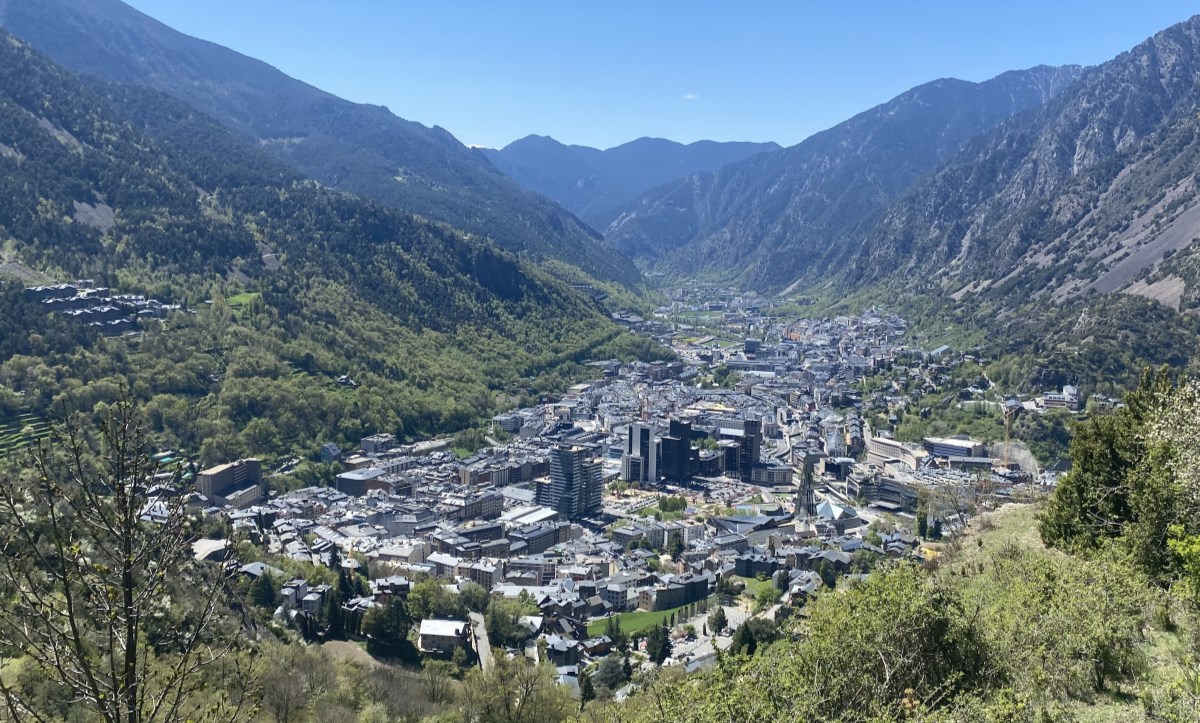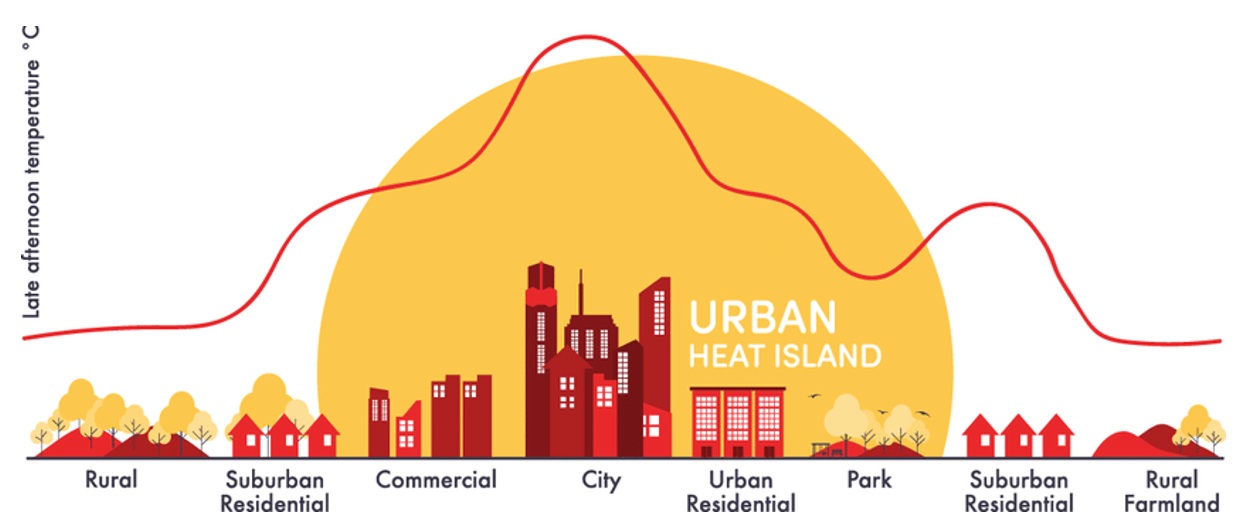Projects

The continuous increase in urban population in recent decades has meant that many metropolises have experienced a rapid process of urbanisation, resulting in significant changes to the landscape and land use. During this urbanisation process, anthropogenic activities such as industry, mobility, and the use of air conditioning systems, as well as the replacement of natural spaces with impermeable surfaces, have altered the climate from a micro-meteorological perspective, causing various climatic phenomena [1]. One of the most studied is the urban heat island (UHI), which is characterised by an increase in temperature in urban areas compared to adjacent suburban and rural areas. These temperature differences can range from a few degrees Celsius in small cities to over 10°C in large metropolises, depending on the season, solar radiation, and the urban characteristics [2].

Urban heat islands have a significant impact on both ecosystems and human health. Among their main consequences are an increase in respiratory problems, especially in vulnerable groups, air quality degradation and a greater demand for energy, among others [3]. Climate change has exacerbated the effect of urban heat islands [4], making the study of their spatial and temporal characteristics, as well as the factors that cause them, essential for mitigating this microclimatic phenomenon [5].
The RefredAnd project aims to analyse urban heat islands and their spatial and temporal variations to, on the one hand, determine the impact of this microclimatic phenomenon on urban areas in Andorra and, on the other hand, to determine whether the climatic and orographic characteristics of mountainous areas present different patterns compared to other urban areas. The parishes of Escaldes-Engordany, one of the most urbanised areas of the country, are being used as case studies for the project. In addition to the analyses, in a later stage, the RefredAnd project also aims to identify and propose cooling strategies adapted to the Andorran context.
[1] M. H. Jahangir, A. Zarfeshani, and M. Arast, “Investigation of green roofs effects on reducing of the urban heat islands formation (The case of a municipal district of Tehran City, Iran),” Nature-Based Solut., vol. 5, no. December 2023, p. 100100, 2024, doi: 10.1016/j.nbsj.2023.100100.
[2] E. Elmarakby and H. Elkadi, “Impact of urban morphology on Urban Heat Island in Manchester’s transit-oriented development,” J. Clean. Prod., vol. 434, no. November 2023, p. 140009, 2024, doi: 10.1016/j.jclepro.2023.140009.
[3] S. Vujovic, B. Haddad, H. Karaky, and N. Sebaibi, “Urban Heat Island : Causes , Consequences , and Mitigation Measures with Emphasis on Reflective and Permeable Pavements,” pp. 459–484, 2021.
[4] Z. Yu, G. Yang, S. Zuo, G. Jørgensen, M. Koga, and H. Vejre, “Urban Forestry & Urban Greening Critical review on the cooling effect of urban blue-green space : A threshold- size perspective,” Urban For. Urban Green., vol. 49, no. February, p. 126630, 2020, doi: 10.1016/j.ufug.2020.126630.
[5] T. Chuan, J. Wu, D. Zhao, Q. Yang, W. Fan, and J. Zhao, “Fine structure analysis of urban heat island of a central city in low-latitude plateau of China,” Urban Clim., vol. 44, no. March, p. 101186, 2022, doi: 10.1016/j.uclim.2022.101186.

 Anna Albalat
Anna Albalat Laura Trapero
Laura Trapero Oriol Travesset
Oriol Travesset Patricia Borges
Patricia Borges Marta Domènech
Marta Domènech Jordi Ascensi
Jordi Ascensi